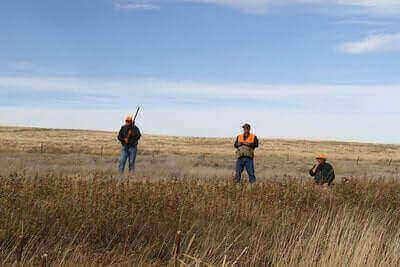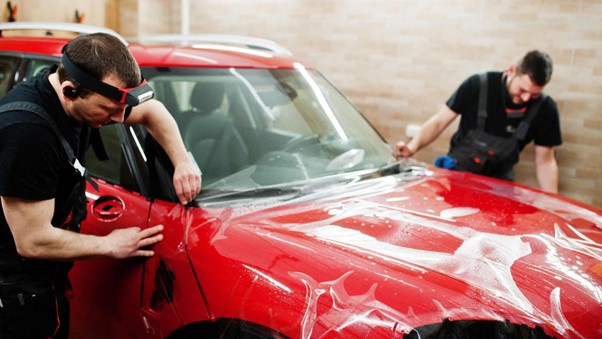
PANCHAKARMA
Ayurvedais not justthe healing method, but it isan art of guidingyou withhow to livethat promotesoverall health of thebody. Itdiscusses the bestfood and lifestyle habits that shouldbeadhered to in order to stop diseasesfrom attackinghumans. According to Ayurvedaall human beings areformed by 5 fundamentalelements i.eaakash, vayu,jala, agni and prthvi. There arethree governing doshasnamely vata, pittaandthe kapha.Every person has theirparticular balance of Best Ayurvedic Doctor in Nashik doshas.
Panchakarma isthe partof Ayurvedathat does not just eliminatetoxic substances from the body,but alsoenhancesthe immune systemand regulatesthe doshas.This is by far themostefficientway to healofAyurvedic Medicine.Itisrecommended to maintainmental and physical health.It is a time provennatural therapy for detoxification andimproving thehealth.
Panchakarma isanSanskrit wordmeaning ‘fiveactions’. It isextremely individualized and tailoredaccording to the need,depending onthedoshas balance, age, digestivesystem, etc.Based on the needsof the patient, allorpartof the fivekarmas areapplied. Thetreatment eliminates excessivedoshas, and also balances the balanceofthe doshas . The therapyeliminates toxins fromthe bodyby utilizing thebody’schannels.
Thepanchakarma process in its entiretycomprises of:
1) Poorva karma- snehana and swedana
2.) Pradhan karma- itincludes virechan, vamanabasti, nasya andraktamokshan, thefivekarmasi.e panchakarma.
3) Paschatkarma- it includesdiet post-therapy
POORVA KARMA
Themain aimthe main goal ofsnehanaas well asswedana is tobring thedoshas that are vitiated to an eliminationform. Itis usedas a therapy that is independentand also aspoorvakarmaof the shodhanchikitsa.
SNEHANA
It’s also knownasoleation therapy.it is one of theprocedures that are performed prior tobeginning the Panchakarma therapy.InCharaka Samhita there are mainly4 types of snehana dravyathought to be the best for snehan.
1) Ghee (ghrita)
2) Oil (taila)
3) Fat (vasa)
4.) Bonemarrow(majja)
Dadimadighrita, tila taila the bala tailaGhrita are just a few ofthemedicines usedinsnehana.
Themethod is used to lubricate the entirebodyusing medicated oil/gheeboth externally and internally.When the medicated oil/ghee has beenused internally, it’s known assnehapanam. It is animportant for the Panchakarma process.
CLASSIFICATION OF SNEHANA-
1) Internal oleation
Itinvolves the consumption ofSnehana Dravya in a prescribedorunmedicated form. Itcouldbecombinedwith other ayurvedicfoods or medicines.The method lubricates thetissuesas well as various areas of thehuman body.
2) External oleation/massage/abhyanga
Itincludes head massage, body massage,gargle , etc. with medicated oil.
SWEDANA
It is also calledsteam therapyortherapeutic sudation. This isthe other procedure done beforePanchakarma.It improvesblood circulation and eliminates thetoxins through the skin poresfrom the body.
It isone ofthemost effective techniques that hasbeeninto practice since longback. Itis used as athe shaman Chikitsa as well asin poorvakarma to prepare for shodhan Chikitsa. Itis performed ona particular part of abody or the wholebody. Themethod used to administerswedanadoes not remain constant as it can be alteredaccording to the needfor the individual.
PRADHAN KARMA OR SHODHAN CHIKITSA
1) VAMANA
It is amethod of controlling therapeuticvomiting. Vamana therapyis a remedy forkapha doshas.When the dosha crossessome limit and istransferred to another place, it need tobeeliminatedfrom thebody. Kaphais foundin the chestarea andgetting rid of it viaan oral pathwayisstraightforward.
HERBA USED AS VAMAK DRAVYA
Madana phala Panchakarma Treatment in Nashik is considered to be themost effectivevamak dravya. Other herbsused areKutaja, nimba,yashtimadhu vacha etc.
Twokinds-
1.)Gastric emesis- itstimulates the gastric mucosa andit then stimulates the vomiting center ofthe brain.
2)Central emesis – ittriggers the medulla of thebrain and causes vomiting to occurin the brain.
Vomiting is regulated by theMedulla Oblongata, a brain regionandbegins with a lot ofsalivation and nausea.
BENEFITS OF VAMANA
Theprocess eliminates the aggravatedkapha dosha, improvesdigestion and metabolism. It alsorestores health and wellness, improvesthefunction of senseorgans,increases fertilityandreduces the rate of ageing.
HERBS USED AS VAMAK DRAVYA
Vamana therapywhen aggravatedKapha dosha is causing diseaseorwhen dominant kapha doeshawith pitta dosha causesthe disease.The therapy has specificwarnings and contraindications.
INDICATIONS-
Thetreatment is recommended fordiarrhea dysentery, fever, or diarrheaof recent origin cough, cold,asthma, tumour,thyroid disorder,urinary tractdisorder and skin diseases, anorexia or respiratory illness, stomach indigestiongoiter, fibroid, filariasis,and more.
CONTRAINDICATIONS-
Patientswho have kapha dosha lower thannormalshouldn’t undergovammanatherapies.Pregnant women, withoutsnehana karma, agni that is strong(digestive system), person who isstressed, hungry or stress, children, an elderly or weak, with an enlargedspleen, intestinal parasites,the prostate is enlarged, etc.in these situations, vamana karmamust be avoided.
2) VIRECHAN
Virechan (purgation)can be described as the second of the karmaofpanchakarma. It isone of the most commonlyemployed therapies, with particular emphasis onillnesses caused byPitta dosha imbalance. The pittadosha is expelledin a forceful manner through the anal channel.The doshas are eliminated withless strain and with less complications whenthan vamana karma. Itcould also be administeredinpitta kapha or vata pittadoshaswhere pitta is dominant. Thetreatment requires adherence to a specificfood regimens in order to achievenormaldiet and to completethetherapy.
HERBS USED AS VIRECHAK DRAVYA
Virechan drugs include milk, takra, gavakshi, vacha, punarnava, shala, panchmoola, saptala, haritaki, kashmarya, draksha, jyotishmati, vibhitaki, amalaki, abhaya etc.
Based on the type of medicine that is administered,Virechan can be classified into two typesThe first is
1.) Snigdha virechan- meaning ofthe word “snigdha” isoily. It isused to describe pitta, whichisconnected tovata dosha.
2) Rooksha virechan- itcan be identified when pitta has beenassociated with kapha dosha.
INDICATIONS
Virechanis a candidate forconstipation, gout, piles as well as jaundice, liver disease ascites, splenomegaly,dysuria, pain in the largeintestinal tract, urogenital diseasesystem inmale and female, nasal bleeding etc.
CONTRAINDICATIONS
Diarrhea, poor digestion and dysentery as well as ulcersin the rectum or emaciatedpersonafter excessiveoleation treatment, wounds etcareall instances in whichvirechanshould not be used.
3) BASTI KARMA
Inthe past,thebladder (basti) wasutilized as anequipmentforthe enema.Thus the name for theprocess is basti karma.
Basti isa special treatmentwithinayurvedic panchakarma.In this treatment, medicated gheeoil, decoction etcare administeredthrough the rectal,vaginal and urinary channels. Itenhances immunity and promotesoverall health of an individual. VataDosha is the root cause ofall the diseasesand basti karmais a treatmentthat is most effective in calmingvata dosha.Therefore, it is describedas ‘ardhaChikitsa’ .
DEFINITION OF BASTI
vstinaa diiyte itih vsti : | |
Theadministration of medicines withmassive or basti(urinary bladder) isknown as basti karma.
A single or a combination ofherbal decoctions, medicated oil-gheeor similar, mamsarasa, raktaand otherdrugs in the formliquid are applied depending onthemedical condition of theperson.
HERBS USED FOR BASTI KARMA
Jeevaka, rishabhaka, jeevanti, guduchi, gokshura, bala, draksha, shatavari, shatpushpa, yashtimadhu, amalaki, brihati, dadima,pippali, vidanga, adraka, musta, nimbi, kutaja etc are used for basti karma.
BENEFITS OF BASTI KARMA-
1.) Expels thedoshas of the night.
2.) Pacifies theaggravated doshas.
3.) Acts as aphrodisiac forthose withsemen depletion.
4.)Can help in losingthe weight and controllingoverweight.
5)Slows down ageing and earlygreying.
6)Helps to provide proper nourishmentandimproves the healthfor the human body.
7) Enhances immunity
8)Improves the quality of lifeandextends the life span.







